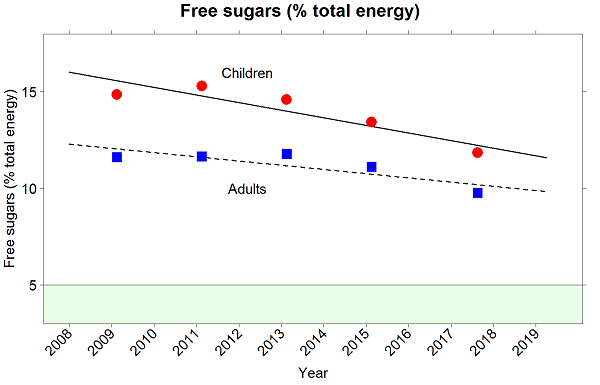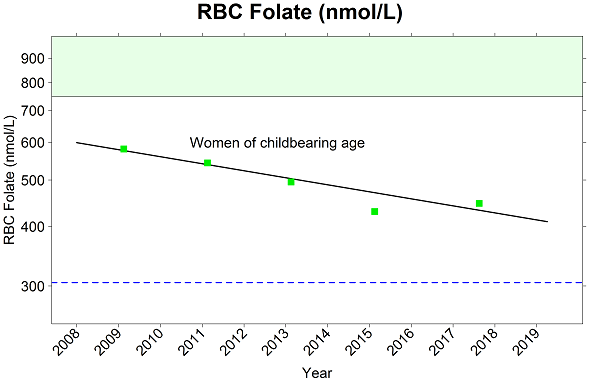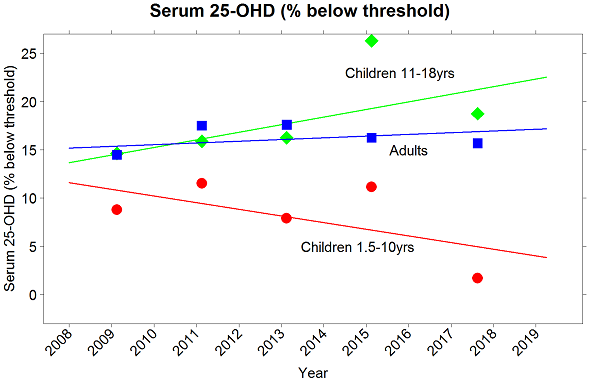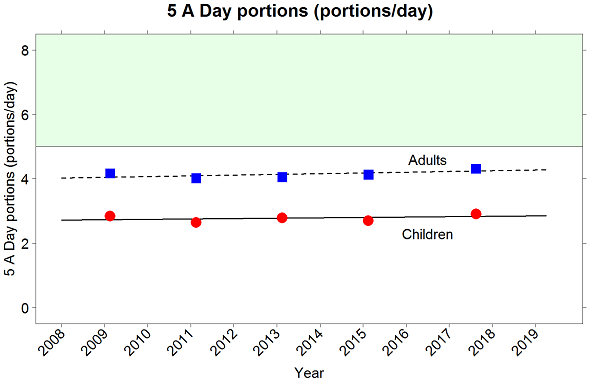Today Public Health England (PHE) have published the latest report from the UK National Diet and Nutrition Survey Rolling Programme (NDNS RP), which covers years 9 to 11 (2016-2019).
The NDNS RP is a continuous cross-sectional survey of the general population aged 1.5 years and over living in private households in the UK, that has been running since 2008. Since the first NDNS surveys in 1992, NDNS data have been used extensively by government to set and monitor progress toward diet and nutrition objectives of UK Health Departments and to develop policy interventions and recommendations, for example in relation to taking vitamin D and folic acid supplements and increasing our fruit and vegetable intake. NDNS data are publicly available via the UK Data Service.
Polly Page, who leads the NIHR Cambridge BRC Dietary Assessment platform at the MRC Epidemiology Unit, said:
The UK stands in an exceptional and enviable position with its longstanding commitment to comprehensive nutritional surveillance, delivered through the National Diet and Nutrition Survey. The National Diet and Nutrition Survey provides a unique insight into the nation’s nutritional wellbeing and is a vital information source for policy makers and researchers. Our report provides the most recently available results from the survey, including data on free sugars consumption and the proportion of the population meeting 5 a day, as well as population vitamin D and folate levels.
This report is the result of a great team effort, scientifically led by the Cambridge NIHR BRC Measurement Platform at the MRC Epidemiology Unit, working in conjunction with our consortium partner NatCen Social Research, and delivered on behalf of Public Health England and the Food Standards Agency. We are indebted to the commitment of all involved, and in particular to the voluntary contribution of the more than a thousand randomly selected members of the UK public who participate in the survey every year.
The report shows results for 2016-2019 and the changes in our food and nutrient intake over the 11 years since 2008. Some of these changes are highlighted here.
Free sugars consumption falls, but is still above the recommended levels
The amount of ‘free sugars’ the UK population is consuming per day, particularly children, has decreased over the 11 year period from 2008 to 2019. ‘Free sugars’ include all sugars added to foods or drinks by the manufacturer, cook or consumer, plus sugars , naturally present in fruit or vegetable juices, honey, syrups, purees and pastes, except for milk sugars in dairy-based drinks. High consumption of free sugars is linked to several adverse health outcomes including increased risk of tooth decay, type 2 diabetes, increased calorie intake and weight gain in children. The recommendation is that free sugars should contribute no more than 5% of total energy and this applies to those aged 2 years and over.
The NDNS figures show that average free sugars intake per day has fallen by around 20 grams (equivalent to 5 sugar cubes) for older children (aged 11-18 years) and around 10 grams for younger children (aged 10 years and under). Examination of the data shows that this is largely attributable to a fall in the consumption of sugary soft drinks. However, when expressed as a percentage of our energy (calories) consumed, free sugars intake remains more than twice the recommended maximum for children aged 4 to 18 years.

Folate levels decreasing in the UK population
The UK population’s folate status is suboptimal and this latest NDNS report shows that it is becoming worse. Average blood folate concentrations have decreased over the 11 years, and the proportion of the population with folate concentrations indicating risk of anaemia has increased. Folate helps the body form healthy red blood cells. Sources of folate in the diet are green leafy vegetables and pulses and foods fortified with folic acid such as breakfast cereals.
Low folate status of women of childbearing age (16 to 49 years) is a particular public health concern because it is associated with increased risk of pregnancies being affected by neural tube defects (NTDs) such as spina bifida. NDNS figures show that the proportion of women of childbearing age in the UK with red blood cell (RBC) folate concentrations below the threshold (748 nmol/L) for minimising risk of NTDs is substantial, with an overall increase from approximately two thirds to almost 90% over the 11 years. These findings lend weight to the long-running call by medical and public health organisations for the mandatory folic acid fortification of flour across the UK.

Vitamin D status – needs attention especially in older children
Vitamin D is essential for healthy growth and maintenance of muscle and bone. This report shows that 10% of children (1.5 to 18 years) and 15% of all adults (aged 19 years and over) have a 25-hydroxyvitamin D concentration less than 25 nmol/L (the level below which there is increased risk of poor musculoskeletal health at a population level). Over the 11 years there has been some improvement in vitamin D status in younger children aged 4 to 10 years and older adults aged 65 years and over.
In this most recent survey 2% of children aged 4 to 10 years have a 25-hydroxyvitamin D concentration less than 25 nmol/L; in those aged 11 to 18 years this proportion is 19% (21% in boys, 17% in girls) and has increased since 2008. These results highlight that older children may be at particular risk of vitamin D deficiency. This is important because of the critical role of vitamin D for the bone development, accrual of peak bone mass and for muscle function.

Some things don’t change – fruit and veg intake remains too low, particularly in children
The latest NDNS figures show that our fruit and vegetable intake has changed little over the 11 years. In terms of the government’s recommended 5 A DAY portions, adults have remained at around 4 portions per day and children aged 11 to 18 around 3 portions per day since 2008.

The NDNS RP is continuing to monitor nutritional trends in the UK, and the next report will include data for 2020-2022.
About the National Diet and Nutrition Survey Rolling Programme
The National Diet and Nutrition Survey Rolling Programme (NDNS RP) is jointly funded by Public Health England and the UK Food Standards Agency. The NDNS provides the only source of nationally representative UK data on the types and quantities of foods consumed by individuals. This enables us to see a detailed picture of the diet and nutrition status of the UK population. Results are used by government to monitor progress toward diet and nutrition objectives of UK Health Departments and to develop policy interventions. It is currently carried out by a consortium comprising NatCen Social Research (NatCen) and the National Institute of Health Research Cambridge Biomedical Research Centre (NIHR CBRC) at the MRC Epidemiology Unit. Scientific leadership for the RP from Year 11 (2018/19) transferred to NIHR BRC from the Medical Research Council Elsie Widdowson Laboratory (MRC EWL).

 MRC Epidemiology Unit
MRC Epidemiology Unit